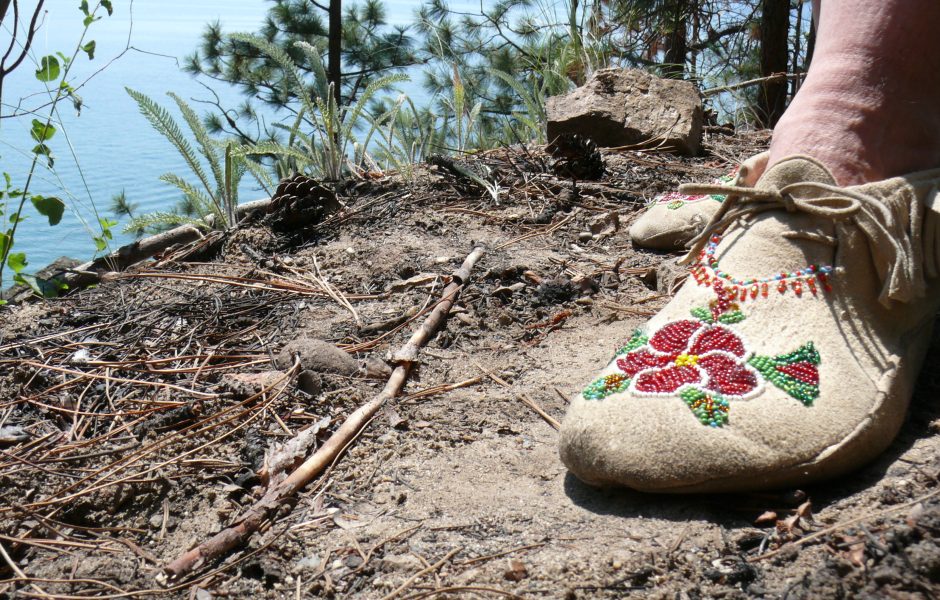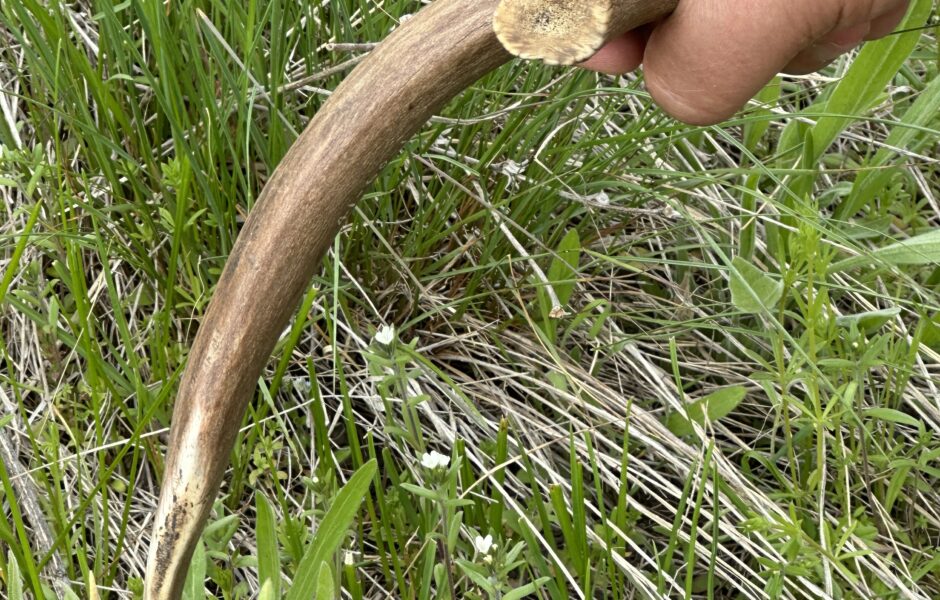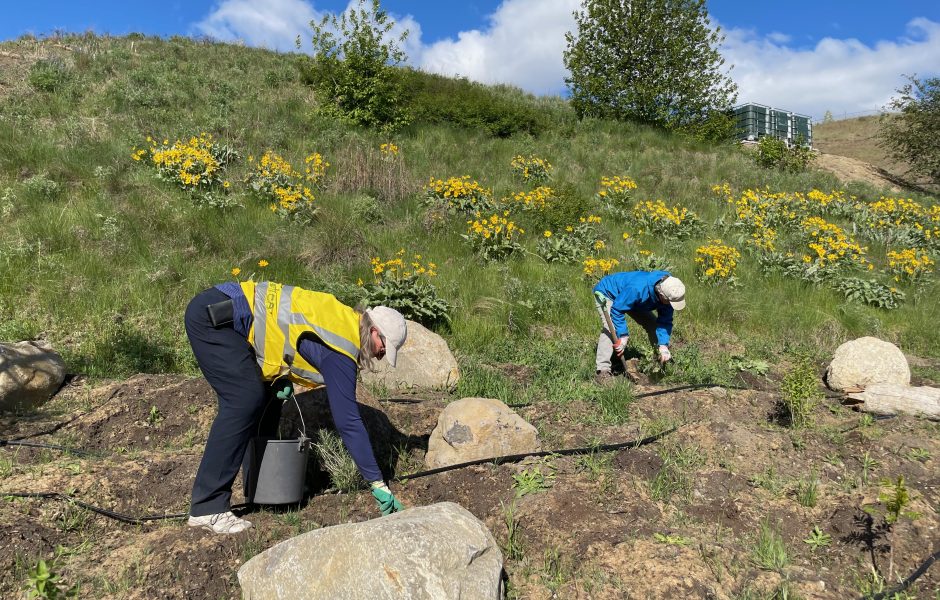
Come for a Visit
Km 0 at n̓kək̓m̓apl̓qs is just off College Way close to the Coldstream Station Parking area on Kalamalka Lake Road. Leave some time to visit the interpretive installation to learn about:
- the First Peoples of this area – the sqilxʷ or Syilx; the language and culture as shared by the Okanagan Indian Band who are partners in managing this trail.
- the little known history of this area called n̓kək̓m̓apl̓qs (referring to the head of Kalamalka Lake), and
- the challenges and joys of restoring native plants.
This web page complements and add to the content on interpretive signs at Km 0.
The Language of the Land
n̓syilxcən (N̓syilxcən̓, N̓syilxcn, N̓syilxčn̓, N̓səl̓xčin̓, Salish) is the language spoken by the Syilx (Salish) people in the vast territory that spans the Interior Plateau from southern BC to northern Washington. There are variations on terms and spellings of n̓syilxcən words due to local preference. At Km 0, we follow the preference of the fluent language speakers of the Okanagan Indian Band. This includes avoiding use of capital letters as that implies greater importance of one figure rather than equality.
“Our language is very important to represent our worldview and way of being. Reclaiming and promoting our language is one way of promoting the health of our communities.”
Michele Johnson, Syilx Language House
n̓syilxcən Pronunciation Guide
Listen to the n̓syilxcən words found on the interpretive signs at Km 0.

Dig Deeper
Want to Learn More?
This section will be developed over time.
Here are some sources to help you learn more about sqilxʷ history in this area.
History of the Okanagan Indian Band
Museum and Archives of Vernon – blogs
Impacts of Settler/Colonists
This timeline (from Okanagan Nation Alliance website) illustrates some events that have affected the Syilx Okanagan Nation people and governance.

Native Plants
Restoration and Stewardship
Native plant restoration was the first phase of work to convert this area from rail yard to trailhead. What we learn about native plant restoration here can help inform restoration of other natural areas or landowners wishing to switch to low maintenance, drought resistant landscaping.
Find out more:
Acknowledgements
Acknowledge working group, funders, outside volunteers, etc…. to come
Artists
Sheldon Pierre Louis is a established syilx multi-disciplinary artist who contributed vibrant images of the food chiefs and and other characters prominant in syilx culture. Sheldon’s syilx roots has shaped his style and informed the connection of his art with land, language, culture, environment and indigenous activism.
Barbara Marchand is an established, award-winning multimedia syilx artist, illustrator and mentor of young artists. Several of Barbara’s sketches are used on these signs. Lauren Marchand is Barbara’s grand-daugher, and the two worked together to digitize, add colour and create backdrops for educational illustrations.
David Wilson is a well known syilx artist who was initially inspired by pictographs, and continues to bring new life into this ancient art style.
Ruby Alexis does not consider herself an artist, but in her work as a cultural researcher for OKIB, has created many beautiful photos, as well as songs and drama performances.
Coralee Miller is a syilx/Okanagan artist and member of the Westbank First Nation community. Coralee is also well known for her humour, and ability to connect learners to the stories of syilx history, including the uncomfortable truths.
